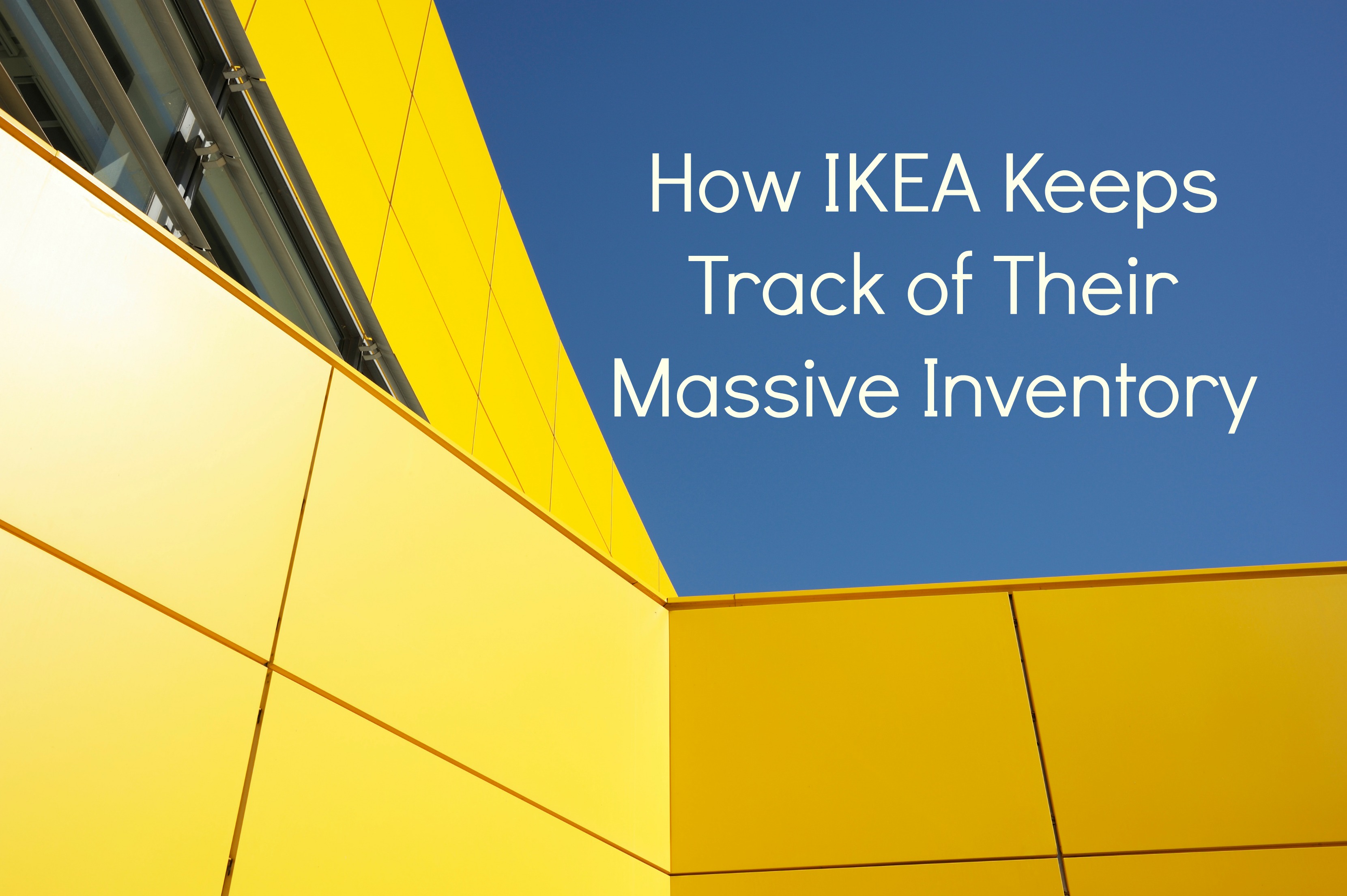Wasp Barcode Technologies: The Barcode Solution People
How IKEA Keeps Track of Their Massive Inventory

When you’re the world’s largest home furnishing retailer, offering roughly about 9,500 products and bringing in
$36.3 billion in sales, some kind of automated inventory management system is a must. For those who have been to IKEA, it’s impossible not to be in awe of the rows of meticulously stacked flat boxes as high as a person can reach, and the strategic supply chain operations and inventory management needed to support that kind efficiency.

Not to mention, IKEA’s vision is to offer well designed, functional furniture at unbeatable prices, meaning they want as many people as possible to be able to afford their products. The company cuts down on cost by designing products that are at least 50 percent made from sustainable or recycled products, according to a case study produced by
The Times of London. With fewer materials, IKEA’s also able to cut down on transportation costs as less fuel, journeys, and manpower are used to ship their products. Additionally, the company builds long-term, sustainable relationships with more than
1,800 suppliers in 50 countries. As of May 2015, IKEA was given a brand value of $11.8 billion, according to
Forbes’ list of the world’s most valuable brands.
[Tweet "As of May 2015, IKEA was given a brand value of $11.8 billion."]
So, how does this high volume retailer keep track of its tens of thousands of do-it-yourself furniture pieces?
Separating Products Into High-Flow and Low-Flow Facilities
When customers shop at IKEA, they browse through the main showroom floor for items, record the items they want to purchase on an inventory list IKEA provides, then obtain the products themselves from the floor pallet location in the warehouse below every showroom floor. All of these processes may seem manual so far, but no way IKEA’s warehouse space can be utilized as efficient with
manual processes, like Excel spreadsheets. Unlike at Amazon, where a
method called chaotic storage is in place, IKEA relies on everything being in the right place at the right time so customers can get to them.
[su_divider top="no" size="2"]
[su_divider top="no" size="2"]
In its
328 stores in 28 countries, IKEA’s operations are either considered high-flow facilities, which focus on the 20 percent of SKUs that make up 80 percent of the store’s volume, or low-flow facilities which rely on more manual processes. It's the high-flow facilities, automatic storage, powered by
automated software, is in place and each product is tracked for accuracy and optimization. Slower-selling products are stocked in a separate low-flow facility and doesn’t require employees to shift or move them around too much, which also drives down costs-per-touch, an inventory management tactic that finds that the more hands that touch a product, the higher the costs associated with that particular product. Every time a product is touched, shipped, moved, loaded, or shifted, it costs the company money, even if that’s as simple as an employee moving the product from one rack to another. By developing and investing in a proper management system, IKEA is able to maximize labor, meaning they see a return on investment for getting the most out of employees time. Additionally, forklifts and pallet jacks are only used after store hours for safety reasons, but this rule also forces IKEA’s storage system to be accurate during store hours so efficient self-service is possible.

Maximum and Minimum Settings
Getting turnover right is extremely imperative for a profitable business model. Accurate record-keeping is seen all over IKEA’s warehouses from placement on products and shelves. The company’s in-store logistics managers use
barcode scanners to adhere to the inventory replenishment management process developed by IKEA called “minimum/maximum settings.” The process was created to meet customer demands without ordering too few or too many products, which can dangerously lead to a company turning away customers or killing its balance sheet with too many products sitting on shelves, not selling.
IKEA’s “minimum settings” maintain the minimum amount of products available before reordering is needed and its “maximum settings” do the same for the maximum amount of a product that can be ordered at a time. Since inventory and restocking is only done at night, after store hours, the minimum and maximum settings are based on the number of products that are available in the store’s reserve stack of bins, which are additional products placed above the floor pallet location with racking where customers retrieve their products to buy. To understand how much inventory is expected to sell in a specific period, IKEA’s in-store logistics managers use software that collects and tracks everything along the supply chain. Just because IKEA is a do-it-yourself retail store, doesn’t mean the company leaves its inventory management to a DIY manual processing system. With spreadsheets, if everything is recorded correctly and human error was out of the equation, you have a good chance of accuracy. This scenario isn’t the reality as inaccurate records are often sprinkled throughout even the most basic spreadsheet, which also means mistakes are harder—and take longer—to track. As a result, slower changes occur and employees are left analyzing data and fixing mistakes rather than adhering to the costs-per-touch tactic that have worked so amazingly well for IKEA thus far.
Sure, IKEA is a furniture retailer, but its functional, well-designed pieces can’t compete in the market without the company’s sustainability, low costs, and efficiency vision, which has always been aimed to keep operating costs low in order to service as many customers as possible and meet high product demand. In order to do so, it needs an advanced, streamlined supply chain management system that relies on automated softwares to save on warehouse space, provide accurate records, and reduce costs-per-touch as much as humanly possible.
How would utilizing an inventory tracking system help your business to manage a similar process "minimum/maximum setting."





